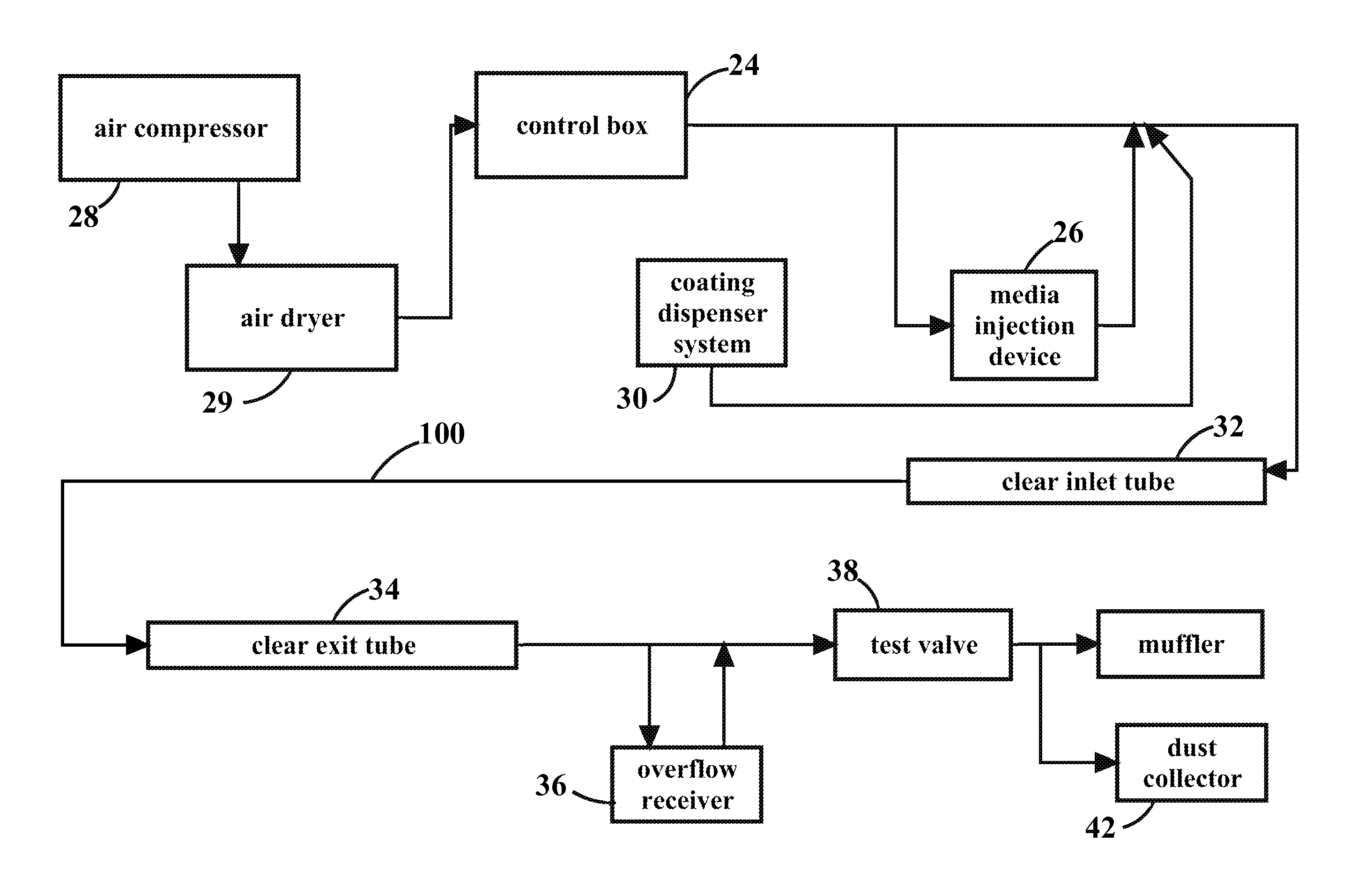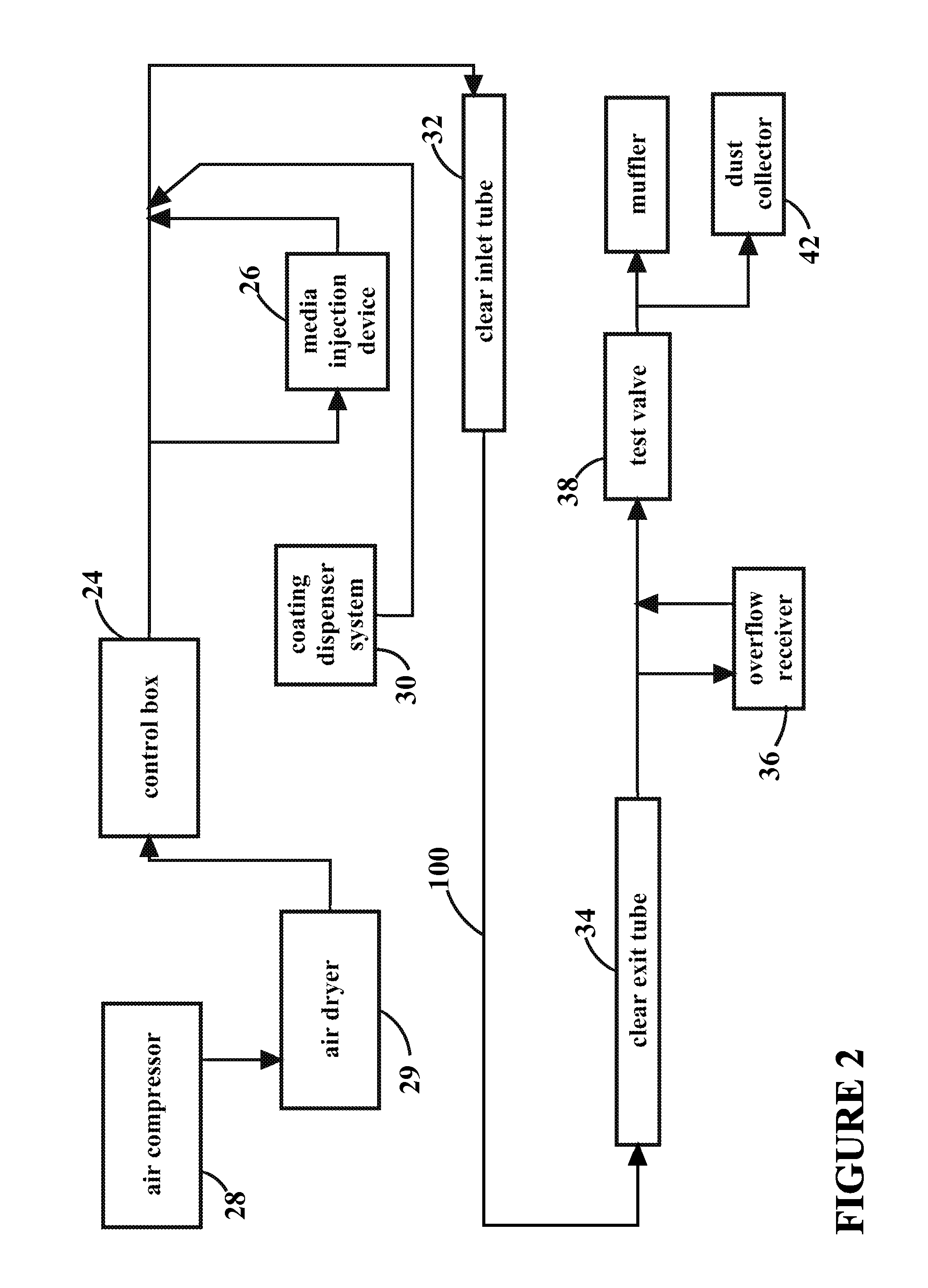Method of internally restoring a leaking pipe
a leakage pipe and internal restoration technology, applied in the field of pipes, can solve the problems of coating being forced out of the leak opening without sealing, the inability of the process to seal leaks, and the inability to seal other than the smallest leaks in the system of pipes with the process
- Summary
- Abstract
- Description
- Claims
- Application Information
AI Technical Summary
Benefits of technology
Problems solved by technology
Method used
Image
Examples
Embodiment Construction
[0030]With reference now to the drawings, and particularly to FIG. 1, there is shown a flow chart of a pipe restoration method 1. With reference to FIG. 2, the pipe restoration system 1 has been found to be satisfactory in repairing a leaking pipe 100, which is a part of a system of pipes for carrying pressurized water in a building. The leaking pipe 100 is commonly encased with a concrete foundation or floor of the building. The leaking pipe is typically a soft copper water pipe experiencing pinhole leaks due to internal pitting corrosion and the leaking pipe 100 is between ½″ and 2″ in diameter. However, the pipe restoration method 1 should not be limited to the previously recited parameters.
[0031]With reference to FIGS. 3-4, the pipe restoration method 1 preferably includes the steps of separating a leaking pipe from a system of pipes in process block 10, drying an interior surface of a leaking pipe in process block 11; measuring the airflow through the leak in process block 12; ...
PUM
| Property | Measurement | Unit |
|---|---|---|
| flow rate | aaaaa | aaaaa |
| pressure | aaaaa | aaaaa |
| temperature | aaaaa | aaaaa |
Abstract
Description
Claims
Application Information
 Login to View More
Login to View More - R&D
- Intellectual Property
- Life Sciences
- Materials
- Tech Scout
- Unparalleled Data Quality
- Higher Quality Content
- 60% Fewer Hallucinations
Browse by: Latest US Patents, China's latest patents, Technical Efficacy Thesaurus, Application Domain, Technology Topic, Popular Technical Reports.
© 2025 PatSnap. All rights reserved.Legal|Privacy policy|Modern Slavery Act Transparency Statement|Sitemap|About US| Contact US: help@patsnap.com



